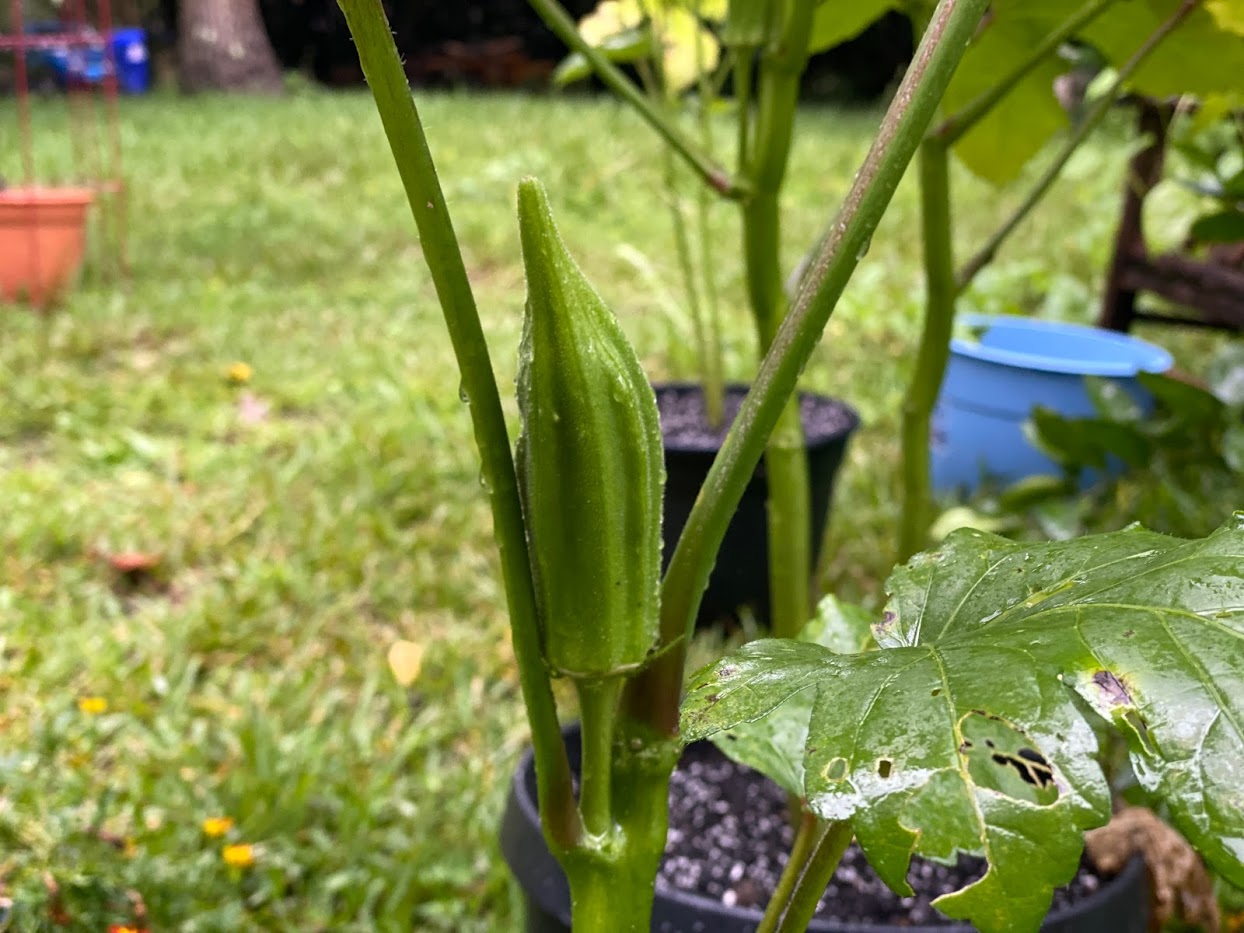Ingredient Spotlight: Okra

“This okra is cooked perfectly, and I’m pretty snobby about my okra,” quips food celeb Padma Lakshmi to Bill Green, chef and co-owner of the Gullah Grub restaurant of St. Helena Island, in the fourth episode of Padma’s newest show, “Taste the Nation”. Through the series, Padma explores the multicultural, multi-ethnic origins of America’s favorite dishes – from hot dogs to burritos to chop suey, and builds a compelling case that America tends to accept the foods of its immigrant populations with open arms, while rejecting and oppressing the immigrants themselves. The story of the Gullah Geechee is one of the country’s oldest tales of this kind, and deeply woven into that narrative is the story of the okra plant.
While okra’s precise origins are unclear, it’s thought to have sprung up around modern-day Ethiopia and spread through the African continent around 2,000 B.C.E and then onward to Padma’s ancestral home of India through ancient trade routes. With such venerable beginnings, its arrival in North America came relatively late, within the packed hulls of slaver ships that transported human chattel to the Eastern coast of the Americas through the 18th century. The nature of its transport varies. Michael Twitty, author of The Cooking Gene, and Padma’s host on her visit to Middleton Place plantation, describes slave merchants bringing okra plants along with their human quarry on the transatlantic voyages. Other historians note a less-known practice, seen primarily among enslaved Western Africans destined for the Caribbean, of braiding okra seeds and rice grains into women’s hair, to ensure a source of sustenance upon arrival to a foreign and forbidding new home.
Okra soon became a staple among the enslaved populations of the Southeastern United States, and would rapidly creep into the gardens and cookery of the Southern white populations as well. As a kid growing up in the South, it most often made its way onto my plate in its popular chopped and fried form. Delicious – in the way that all fried things are delicious. As a grown-up with a subtler palate (and an awareness of the need for non-fried vegetables in my diet), I find I like it done up in a simple sauté. Some folks consider the vegetable “slimy”, owing to the mucilage it contains – a soluble fiber that’s actually quite healthy for humans. This unique quality can be lessened by cooking okra pods whole, or in an acidic base, such as vinegar or tomatoes. In fact, a tomato base is exactly where you’ll find okra in Charleston’s most iconic okra dish – okra soup.
Called “ochra” soup in The Virginia Housewife, one of America’s oldest cookbooks with an initial publication date of 1824, the dish is considered by some to be a Gullah cousin to the Cajun gumbo. Okra is the star of the show and the primary thickening agent, but the rest of the dish can be made out of whatever happens to be in your garden (or kitchen) on a hot summer day. It can be stretched to feed many when times are lean, and is brought to life by a blend of spices that shifts from one Gullah household to another – a true reflection of both its rich Western African roots and the scattering nature of the diaspora that brought it here.
While okra soup is Charleston’s most “historic” okra iteration, this versatile summer vegetable can be found in a multitude of dishes throughout the Lowcountry in South Carolina’s hottest months. Fresh or fried, stewed or sauteed, or even pickled and garnishing a Bloody Mary; every foodie should have okra on their dining list during a visit to the Palmetto City. If you’re looking for some guidance on how to find all of Charleston’s seasonal best, be sure to book our fantastic Farm-to-Table Experience, and learn all about the finest produce South Carolina has to offer, all year long
-Palmer Stowe
